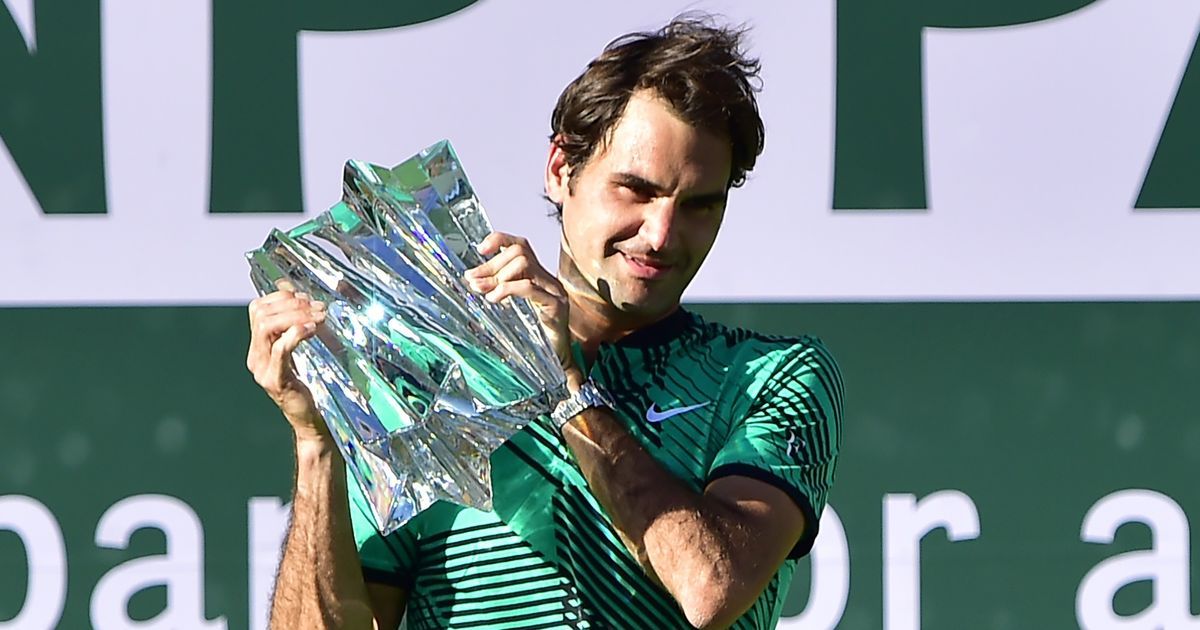I was going to put a question mark after the wording “Federer’s Year” initially since there’s only been 3,5 months so far, but even if he didn’t win another match you can still call it his year. At soon 36 years of age, Roger Federer has won his 18th slam and 25th Masters title (with his 6-4 7-5 win against compatriot Stan Wawrinka in the Indian Wells final yesterday) and he looks hungry for more. The most valuable brand in sports is just growing stronger.
You wonder what strings and racquet Roger Federer uses? Read this article.
I felt quite strongly that Federer would win the tournament after his 4th round match against his familiar legendary rival, Rafael Nadal, (coupled with the early exits of Murray and Djokovic who, by the way, are not playing Miami Masters) where Federer arguably hit his backhand better than he has ever done before. Finally, I understood why Ljubicic had been such a good coaching decision, the Croat always had a very strong one-handed backhand and the way Federer stepped in and took the ball on the rise and thundered it cross-court, it was obvious there had been lots of work on that usually inferior wing.
The Telegraph tennis correspondent Simon Briggs wrote about the new-found efficiency and beauty of Federer’s backhand in his (premium subscriber) post: “Why I was wrong to suggest Federer is mortal after all“:
Not even Stan Wawrinka, supposedly the man with the world’s best single-armed backhand, rips his service returns with such ambition.“It’s like the birth of a new great shot in the game,” breathed the Sky commentator Peter Fleming, with the excitement of a naturalist stumbling over an unclassified beetle.
Briggs then went on to write:
How is Federer able to learn new tricks at 35 – an age at which every other modern giant, with the partial exception of Andre Agassi, has crumbled or quit? The answers are wide-ranging. Physically, he possesses the explosivity of a Dan Carter or a Cristiano Ronaldo. Technically, his strokes depend less on brute force than a perfect kinetic chain. Tactically, he has a fencer’s eye for a quick kill: his average set length of around 40 minutes is the lowest of the leading men.
He also mentioned Federer’s “new” racquet, the Wilson Pro Staff 97 Roger Federer Autograph:
The enlarged, 97-square-inch surface area of Federer’s new racket is clearly a factor in his latest reinvention. So too is the guidance of coach Ivan Ljubicic. But the impetus still starts with the man himself – a rare example of a professional athlete for whom sport is less work than play.
Briggs wrote his article before Federer had actually won his 25th Masters title so I’m sure he’s even more in awe of the great champ now (as we all are).
I think what sets Federer apart from pretty much all other legends is the game is his never-dying and playful love of the game. He just enjoys the game so much and constantly looks for new ways to improve. In 2015 he surprised everyone with the sneaky SABR attack that he had worked on in practice with his then coach Stefan Edberg. This time he’s showing the world that the one-handed backhand can indeed be a deadly weapon.
I don’t know any other player who works on his game with such enjoyment. And that’s why he’s the GOAT. Because really, is that even a discussion anymore?



